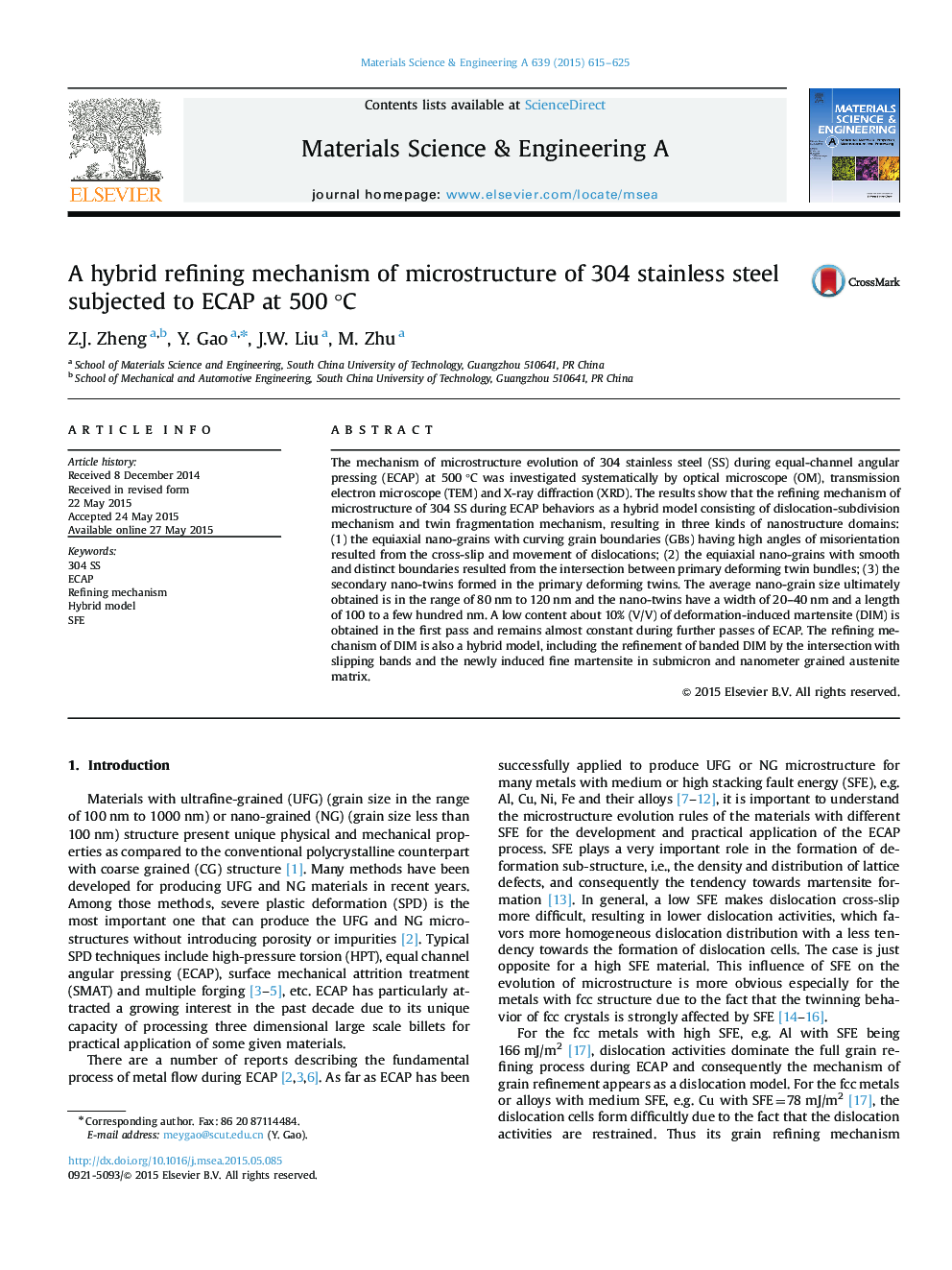| Article ID | Journal | Published Year | Pages | File Type |
|---|---|---|---|---|
| 7977961 | Materials Science and Engineering: A | 2015 | 11 Pages |
Abstract
The mechanism of microstructure evolution of 304 stainless steel (SS) during equal-channel angular pressing (ECAP) at 500 °C was investigated systematically by optical microscope (OM), transmission electron microscope (TEM) and X-ray diffraction (XRD). The results show that the refining mechanism of microstructure of 304 SS during ECAP behaviors as a hybrid model consisting of dislocation-subdivision mechanism and twin fragmentation mechanism, resulting in three kinds of nanostructure domains: (1) the equiaxial nano-grains with curving grain boundaries (GBs) having high angles of misorientation resulted from the cross-slip and movement of dislocations; (2) the equiaxial nano-grains with smooth and distinct boundaries resulted from the intersection between primary deforming twin bundles; (3) the secondary nano-twins formed in the primary deforming twins. The average nano-grain size ultimately obtained is in the range of 80 nm to 120 nm and the nano-twins have a width of 20-40 nm and a length of 100 to a few hundred nm. A low content about 10% (V/V) of deformation-induced martensite (DIM) is obtained in the first pass and remains almost constant during further passes of ECAP. The refining mechanism of DIM is also a hybrid model, including the refinement of banded DIM by the intersection with slipping bands and the newly induced fine martensite in submicron and nanometer grained austenite matrix.
Related Topics
Physical Sciences and Engineering
Materials Science
Materials Science (General)
Authors
Z.J. Zheng, Y. Gao, J.W. Liu, M. Zhu,
